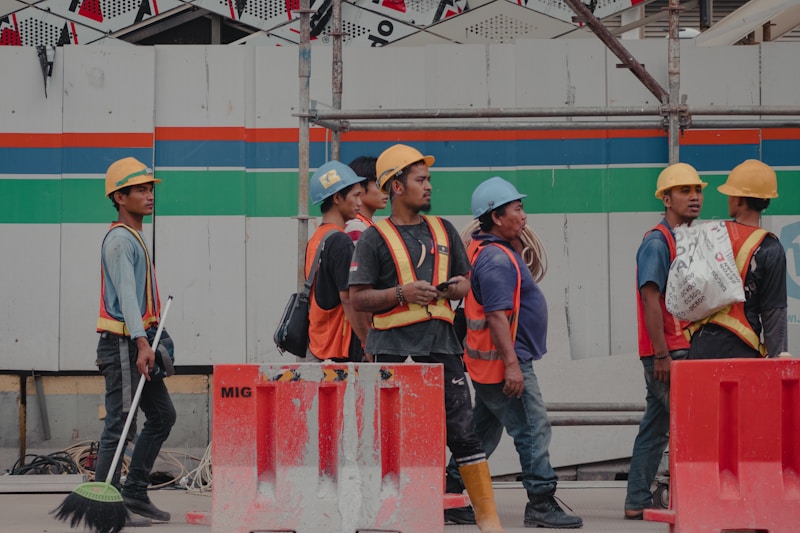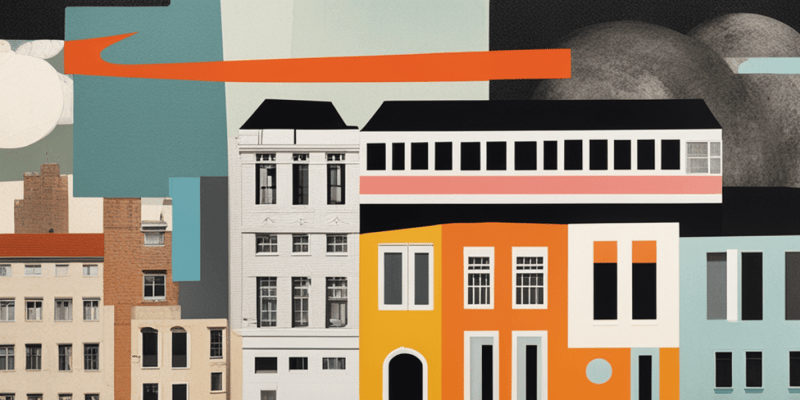9 Questions
What is the smallest group of buildings surrounded by streets called?
A city block
What is the basic unit of a city's urban fabric?
City blocks
What is the typical shape of city blocks?
Square or rectangular
What is the standard size of a city block in Manhattan?
264 by 900 feet
What is a superblock?
An area of urban land that is bounded by arterial roads and the size of multiple typically sized city blocks
What is the purpose of superblocks?
To reduce traffic, cut air and noise pollution in the city, and reallocate space to pedestrians and cyclists
Where were superblocks first introduced?
Barcelona, Spain
What is the typical structure of Japanese superblocks?
A ‘hard shell’ of tall buildings with commercial uses along the perimeter arterial roads, with a ‘soft yolk’ of low-rise residential use in the centre
What is EveryBlock?
An online innovation and website that uses geo-specific feeds from neighbourhood blogs to give readers a picture of what is going on in their town or neighbourhood down to the block
Study Notes
Smallest area surrounded by streets:
-
A city block is the smallest group of buildings surrounded by streets, not counting any type of thoroughfare within the area of a building or comparable structure.
-
City blocks form the basic unit of a city's urban fabric and may be subdivided into smaller land lots in private ownership.
-
City blocks are usually built-up to varying degrees and form the physical containers of public space.
-
The size of city blocks varies widely among cities, and they are usually square or rectangular.
-
The standard city block in Manhattan is about 264 by 900 feet, while in Chicago, a typical city block is 330 by 660 feet.
-
In much of the US and Canada, the addresses follow a block and lot number system, in which each block of a street is allotted 100 building numbers.
-
Superblocks are an area of urban land that is bounded by arterial roads and the size of multiple typically sized city blocks.
-
Superblocks can be auto-centric or pedestrian-centric and have different typologies based on their internal road networks.
-
Superblocks were popular during the early and mid-20th century auto-centric suburban development.
-
Superblocks can be found in central city areas, where they are more often associated with institutional, educational, recreational, and corporate rather than residential uses.
-
Superblocks have been proposed as a potential solution to road space prioritization and increased pedestrian flows in the CBD of Melbourne, Australia.
-
Barcelona's super·illes, or superblocks, are being superimposed in the Eixample District's famous Ildefons Cerdà-designed late 19th-century grid plan.Superblock - a type of urban planning
-
Superblocks are a type of urban planning that aims to reduce traffic, cut air and noise pollution in the city, and reallocate space to pedestrians and cyclists.
-
The concept of superblocks was first introduced in Barcelona, Spain, where nine-block areas were closed off to vehicle traffic and turned into pedestrian-friendly spaces.
-
The superilles (superblocks) in Barcelona have reduced traffic by 21% and provided more space for pedestrians and cyclists.
-
The implementation of the superblock concept in Barcelona only cost €20 million and was done by changing traffic signals.
-
The superblocks in Barcelona have been met with criticism from some residents who complain about the increased traffic on the arterial perimeter roads and the distance for some previously short car trips.
-
Superblocks have been the prevalent mode of urban land use planning in Japan, with cities arranged around a system of wide arterial roads and an orthogonal network of narrow internal streets.
-
Japanese superblocks are typically characterised by a ‘hard shell’ of tall buildings with commercial uses along the perimeter arterial roads, with a ‘soft yolk’ of low-rise residential use in the centre.
-
The spatial structure of superblocks can be analysed through the classification of roads as ‘global’, ‘local’, and ‘glocal’ roads.
-
In a geoprocessing perspective, there are two complementary ways of modelling city blocks: always a block without sidewalks is within a block with sidewalks and the geometric subtraction of a block without sidewalks from a block with sidewalks.
-
Perimeter blocks are a type of city block built up on all sides surrounding a central space that is semi-private.
-
In North American and Australian English, the word "block" is used as an informal unit of distance.
-
EveryBlock is an online innovation and website that uses geo-specific feeds from neighbourhood blogs to give readers a picture of what is going on in their town or neighbourhood down to the block.
Test your knowledge on urban planning with our latest quiz on the smallest area surrounded by streets! Explore the concept of city blocks and superblocks, and learn about their different typologies and spatial structures. Discover how the implementation of superblocks can reduce traffic, cut air and noise pollution, and provide more space for pedestrians and cyclists. From Barcelona's superilles to Japan's urban land use planning, this quiz covers it all. Challenge yourself and see how much you know about the smallest units of a city's
Make Your Own Quizzes and Flashcards
Convert your notes into interactive study material.





